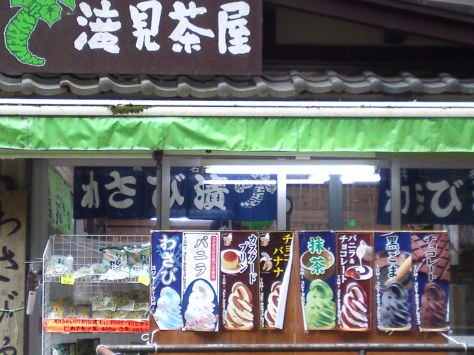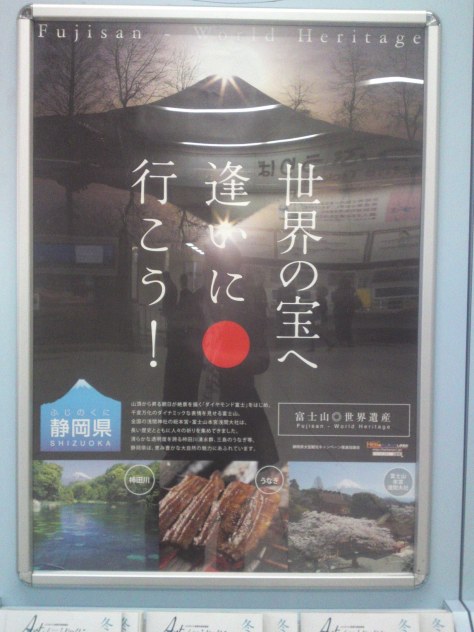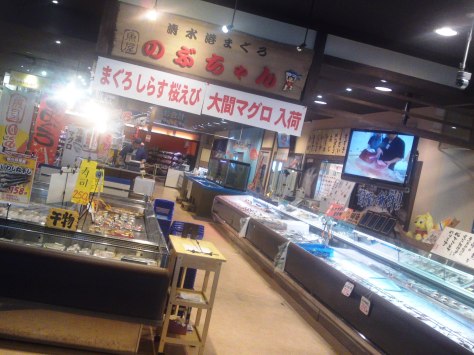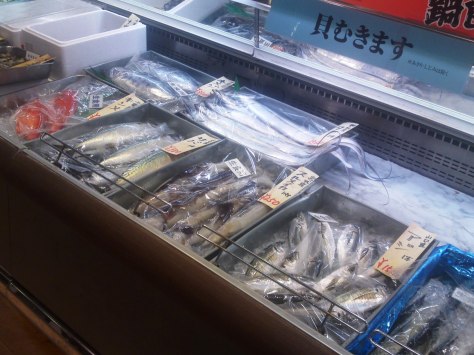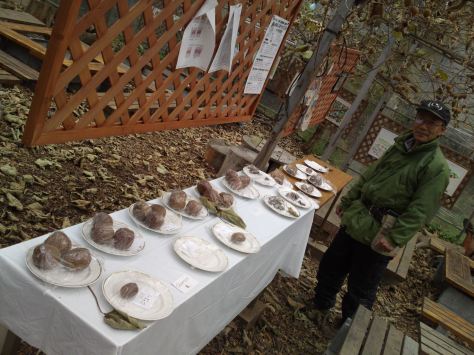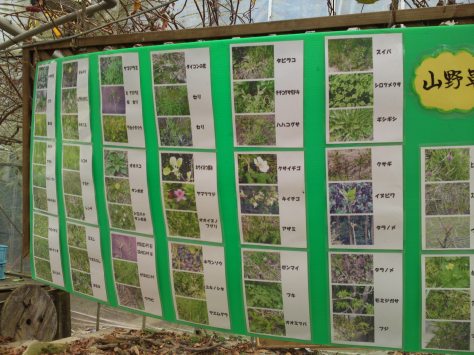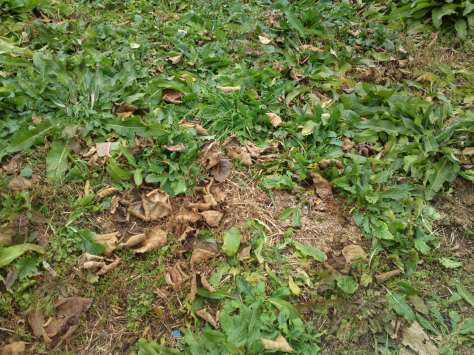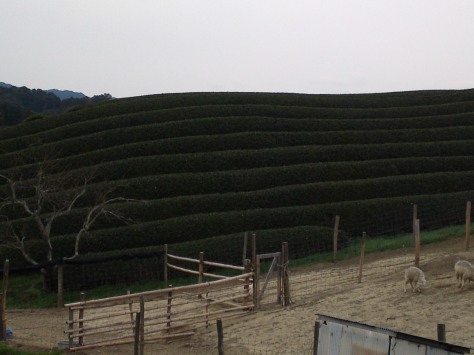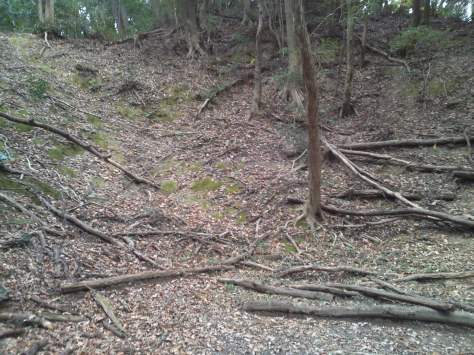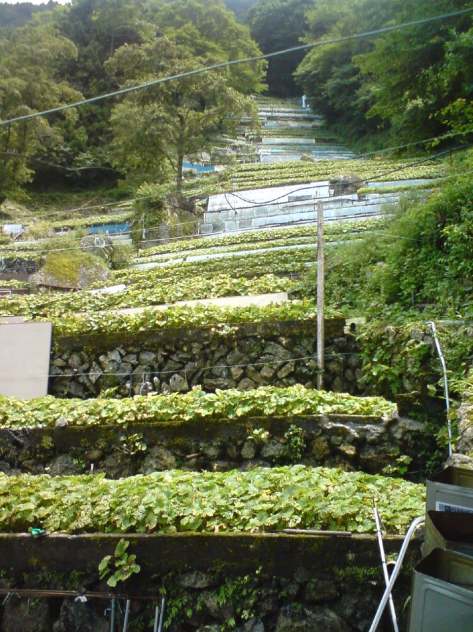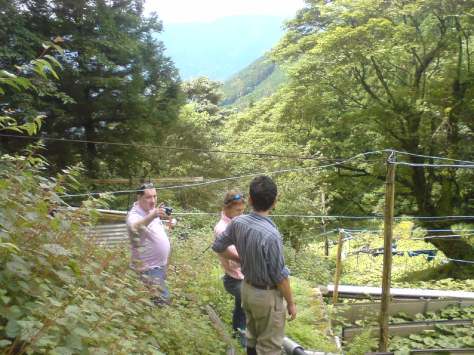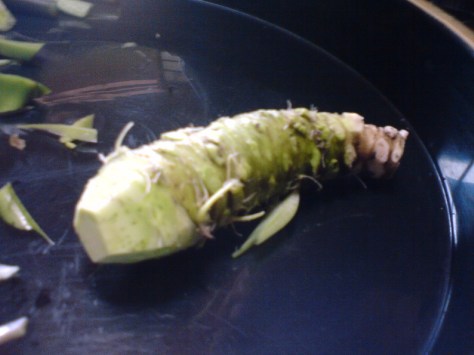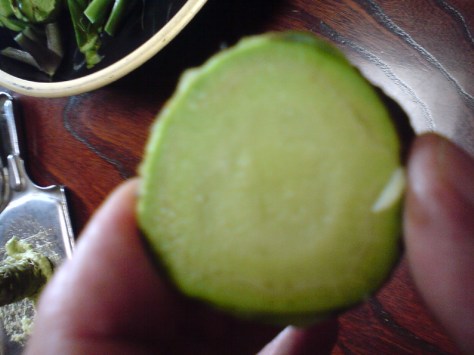The false and the true wasabi ice cream!LOL
If you wish to visit Izu Peninsula, one of the most famous tourist spots in the whole of Japan, be it for a single day or longer, there is a very simple way to do that allows you to explore the area on or off the beaten tracks.
Wherever you come from in Japan or Shizuoka Prefecture, first go to Mishima City and change trains from the JR Railway Line to the Private Izu Hakone Senzu Line which will take you all the way to Shizenji, its final destination.
Then at the Shuzenji Bus Station (beside the Railway Station) choose your destination (buses cover the whole peninsula from there) and enjoy a quiet ride. Take the very back seats if you can as they are always elevated and enable you to enjoy the views on the way from a better angle!
This time my destination was the Joren Waterfalls/浄の滝 in Yuugashima/湯ヶ島.
Don’t forget to take a picture of the bus stop sign for your collection!
What’s that inside the bus stop shelter?
“Beware of the Wild Boars!”
It’s not a joke! (Mind you, they make for good food, too!)
They look cute, but their sausages are a local delicacy!
They are also delicious as Inoshishi Man/猪まん/large steamed wild boar dumplings!
Incidentally visit the nearby souvenir shop where you can find Shizuoka Green Tea, real Shizuoka Wasabi Schochu and extravagant Shizuoka sake!
Now, what does that sign say?
Wasabi Soft!
Here they are! Here they are!
Real wasabi (soft) ice cream (I mean the one in the front!) made with wasabi grown in Izu peninsula!
Really piquant and sweet! A must-taste!
Alright let’s go to the waterfalls!
But first consult the board for some useful information written in English!
Quite a few stairs waiting for you!
More wasabi is apparently waiting for you downstairs!
More English information on the way to the waterfalls!
Do make a point to read it! You will be able to bosat your knowledge back home!
More wasabi ice cream waiting for you!
And fresh wasabi roots on sale!
Can you see the wasabi water fields on your way down?
Impressive, isn’t it? All grown organically in running natural water!
What are they doing?
Fishing ayu trout/鮎!
Now, here is some great fun for you and your kids:
Ask (for a fee) the small shop below to lend you a rod, line and lure to catch the ayu trouts in the river flowing away from the waterfalls and have your catch grilled for immediate pleasure!
Go there in the colder season when the water is pure and crystal clear!
Our destination: Jouren No Taki/Jyoren Waterfalls!
You will realize there why the water in Shizuoka Prefecture and Izu Peninsula is so famous!
I must take a dip there next summer! (I wonder if they will let me?)
Looking forward to visit other spots in the Izu Peninsula!
RECOMMENDED RELATED WEBSITES
So Good Sushi Restaurant in Nice France
Navigating Nagoya by Paige, Shop with Intent by Debbie, BULA KANA in Fiji, Kraemer’s Culinary blog by Frank Kraemer in New York,Tokyo Food File by Robbie Swinnerton, Green Tea Club by Satoshi Nihonyanagi in Shizuoka!, Mind Some by Tina in Taiwan, Le Manger by Camille Oger (French), The Indian Tourist, Masala Herb by Helene Dsouza in Goa, India, Mummy I Can Cook! by Shu Han in London, Pierre.Cuisine, Francescannotwrite, My White Kitchen, Foodhoe, Chucks Eats, Things that Fizz & Stuff, Five Euro Food by Charles,Red Shallot Kitchen by Priscilla,With a Glass, Nami | Just One Cookbook, Peach Farm Studio, Clumsyfingers by Xethia, PepperBento, Hapabento, Kitchen Cow, Lunch In A Box, Susan at Arkonlite, Vegan Lunch Box; Tokyo Tom Baker, Daily Food Porn/Osaka, Only Nature Food Porn, Happy Little Bento, J-Mama’s Kitchen, Cook, Eat, Play, Repeat, Bento Lunch Blog (German), Adventures In Bento, Anna The Red’s Bento Factory, Ohayo Bento,
Must-see tasting websites:
-Sake: Ichi For The Michi by Rebekah Wilson-Lye in Tokyo, Tokyo Through The Drinking Glass, Tokyo Foodcast, Urban Sake, Sake World
-Wine: Palate To Pen, Warren Bobrow, Cellar Tours, Ancient Fire Wines Blog
-Beer: Another Pint, Please!, Beering In Good Mind: All about Craft Beer in Kansai by Nevitt Reagan!
ABRACADABREW, Magical Craftbeer from Japan
-Whisky: Nonjatta: All about whisky in Japan by Stefan Van Eycken
-Japanese Pottery to enjoy your favourite drinks: Yellin Yakimono Gallery
Non gastronomy must-see sites by Shizuoka Residents
HIGHOCTANE/HAIOKU by Nick Itoh in Shizuoka City















